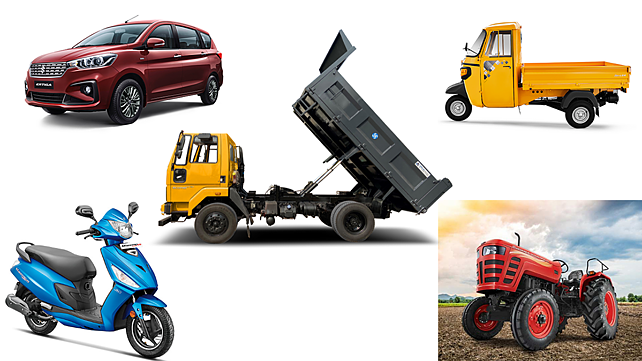
Two-wheelers, passenger vehicles (PVs) and tractors continue to show weak performance due to rural India remaining in distress, while three-wheelers and commercial vehicles (CVs) exhibit growth in sales in January 2022 against the same month last year.
According to vehicle retail data released by the Federation Of Automobile Dealers Associations (FADA), the three-wheelers and CVs grew by 30% and 20.5%, while two-wheelers, PVs and tractors fell by -13%, -10% and -10%, respectively. Non-availability of PVs due to semi-conductor shortage continues to play spoilsport leading to the inventory that remains at a historic low of eight to ten days while two-wheeler inventory reduces from alarming levels to 25-30 days.
On a YoY basis, total vehicle retail for January ’22 decreased by -10.7% and - 18% compared to January 2020 (a regular pre-COVID month).
Commenting on January 2022 sales performance, Vinkesh Gulati, President, FADA, said auto retails weak performance of -18.4% compared to January 2020 continues to show that India is yet to recover from the COVID effect which gripped the world about two years ago. Despite good demand, PVs continues to face the brunt of semi-conductor shortage resulting in a void of a healthy inventory. Coming to the two-wheeler category, the rural distress coupled with price rise and omicron wave played a villain’s role for this segment, he said.
With the revival in the economy, the CV segment continues to show YoY growth, especially in the HCV category. Moreover, with increased infrastructure spending by Central and State governments, the overall CV segment remains in momentum, he said.
“In fact, 55% of dealers in our internal survey said that they lost 10% + sales due to the Omicron wave,” Gulati added.
Talking on the near term outlook, the FADA President said that as India gets back on its feet post the third wave of COVID, “we expect that auto retail will slowly turn positive. Semi-conductor shortage is also showing some signs of easing as many PV OEMs assure of better dispatch. We hence expect vehicle availability to improve going further.”
FADA is optimistic about the Union Budget 2022-23 that stressed on developing 25,000 kms of new highways. This will further push infrastructure spending, thus resulting in an increase in CV sales. Added to this, some traction is also being witnessed in replacement demand after two years.
Rural India has generally been a key driver for the two-wheeler and entry-level passenger vehicle segment.
With the government’s plan for INR 2.3 lakh crore direct payment as MSP to farmers, it may work as a booster for two-wheelers, tractors and entry-level PV sales. The upcoming marriage season will also trigger some demand revival for the 2-Wheeler segment.
Accordingly, FADA changed its outlook from ‘negative – neutral’ to ‘neutral’ for the next couple of months.